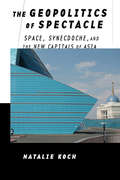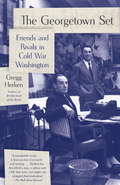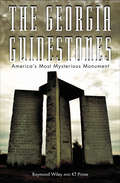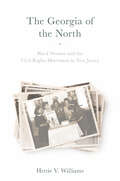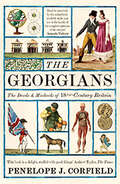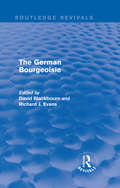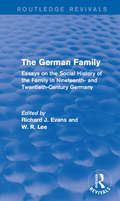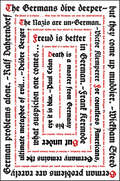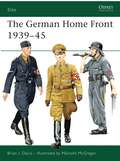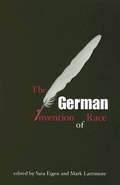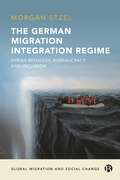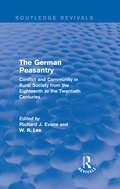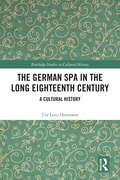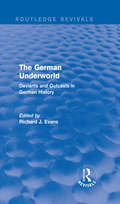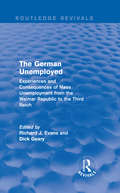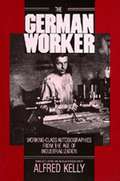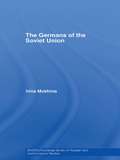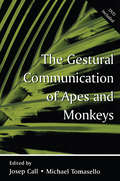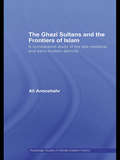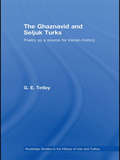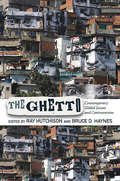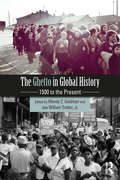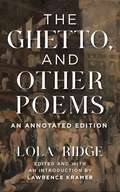- Table View
- List View
The Geopolitics of Spectacle: Space, Synecdoche, and the New Capitals of Asia
by Natalie KochWhy do autocrats build spectacular new capital cities? In The Geopolitics of Spectacle, Natalie Koch considers how autocratic rulers use "spectacular" projects to shape state-society relations, but rather than focus on the standard approach—on the project itself—she considers the unspectacular "others." The contrasting views of those from the poorest regions toward these new national capitals help her develop a geographic approach to spectacle.Koch uses Astana in Kazakhstan to exemplify her argument, comparing that spectacular city with others from resource-rich, nondemocratic nations in central Asia, the Arabian Peninsula, and Southeast Asia. The Geopolitics of Spectacle draws new political-geographic lessons and shows that these spectacles can be understood only from multiple viewpoints, sites, and temporalities. Koch explicitly theorizes spectacle geographically and in so doing extends the analysis of governmentality into new empirical and theoretical terrain.With cases ranging from Azerbaijan to Qatar and Myanmar, and an intriguing account of reactions to the new capital of Astana from the poverty-stricken Aral Sea region of Kazakhstan, Koch’s book provides food for thought for readers in human geography, anthropology, sociology, urban studies, political science, international affairs, and post-Soviet and central Asian studies.
The Geopolitics of the Cold War and Narratives of Inclusion
by Kelly Coogan-GehrThis book illuminates intricate and unexpected connections among the past of academic feminism, the geopolitics of the Cold War, and the concept of intersectionality as it is articulated in scholarship on and by U. S. women of color.
The Georgetown Set
by Gregg HerkenA fascinating, behind-the-scenes history of postwar Washington--a rich and colorful portrait of the close-knit group of journalists, spies, and government officials who waged the Cold War over cocktails and dinner. In the years after World War II, Georgetown's leafy streets were home to an unlikely group of Cold Warriors: a coterie of affluent, well-educated, and connected civilians who helped steer American strategy from the Marshall Plan through McCarthyism, Watergate, and the endgame of Vietnam. The Georgetown set included Phil and Kay Graham, husband-and-wife publishers of The Washington Post; Joe and Stewart Alsop, odd-couple brothers who were among the country's premier political pundits; Frank Wisner, a driven, manic-depressive lawyer in charge of CIA covert operations; and a host of other diplomats, spies, and scholars responsible for crafting America's response to the Soviet Union from Truman to Reagan. This was a smaller, cozier Washington--utterly unlike today's capital--where presidents made foreign policy in consultation with reporters and professors over martinis and hors d'oeuvres, and columnists like the Alsops promoted those policies in the next day's newspapers. Together, they navigated the perilous years of the Cold War, yielding triumphs--and tragedies--with very real consequences for present-day America and the world. Gregg Herken captures their successes and failures and gives us intimate portraits of these dedicated and talented, if deeply flawed, individuals. Throughout, he illuminates the drama of those years, bringing this remarkable roster of men and women and their world not only out into the open but vividly to life.From the Hardcover edition.
The Georgia Guidestones: America's Most Mysterious Monument
by Raymond Wiley KT PrimeThe remarkable true story of the gigantic granite slabs, engraved with messages, that appeared in 1980 and still puzzle the public to this day. The Georgia Guidestones are a collection of standing stones near Elberton, Georgia. Built in 1980 by an unknown party, they are primarily composed of six slabs of granite: one central pillar, four &“major&” stones that fan out from the center, and a capstone. The capstone has engravings on all four of its sides in four different ancient languages, all of which translate to &“Let these be guidestones to an Age of Reason.&” Also engraved is a set of ten guidelines that have provoked controversy, speculation, and rumors of conspiracies stretching far beyond northeast Georgia. Conspiracy theorists surmise a global plot on the part of a group of shadowy men to subjugate and oppress the world's population and create a &“new world order.&” Others believe that the man behind the monument was a Rosicrucian, and that the stones are representative of that group&’s magical manifesto. Some people even believe that it is a landing site for an alien spacecraft of some kind. At the heart of this confusion is the missing piece of the puzzle: who was the mystery man who started the entire chain of events? This fascinating book explores the whole story, examining what we know—and what we don&’t.
The Georgia of the North: Black Women and the Civil Rights Movement in New Jersey (CERES: Rutgers Studies in History)
by Hettie V. WilliamsThe Georgia of the North is a historical narrative about Black women and the long civil rights movement in New Jersey from the Great Migration to 1954. Specifically, the critical role played by Black women in forging interracial, cross-class, and cross-gender alliances at the local and national level and their role in securing the passage of progressive civil rights legislation in the Garden State is at the core of this book. This narrative is largely defined by a central question: How and why did New Jersey’s Black leaders, community members, and women in particular, affect major civil rights legislation, legal equality, and integration a decade before the Brown v. Board of Education, Topeka, Kansas decision? In this analysis, the history of the early Black freedom struggle in New Jersey is predicated on the argument that the Civil Rights Movement began in New Jersey, and that Black women were central actors in this struggle.
The Georgians: The Deeds and Misdeeds of 18th-Century Britain
by Penelope J. CorfieldA comprehensive history of the Georgians, comparing past views of these exciting, turbulent, and controversial times with our attitudes today. The Georgian era is often seen as a time of innovations. It saw the end of monarchical absolutism, global exploration and settlements overseas, the world&’s first industrial revolution, deep transformations in religious and cultural life, and Britain&’s role in the international trade in enslaved Africans. But how were these changes perceived by people at the time? And how do their viewpoints compare with attitudes today? In this wide-ranging history, Penelope J. Corfield explores every aspect of Georgian life—politics and empire, culture and society, love and violence, religion and science, industry and towns. People&’s responses at the time were often divided. Pessimists saw loss and decline, while optimists saw improvements and light. Out of such tensions came the Georgian culture of both experiment and resistance. Corfield emphasizes those elements of deep continuity that persisted even within major changes, and shows how new developments were challenged if their human consequences proved dire.
The German Bourgeoisie: Essays on the Social History of the German Middle Class from the Late Eighteenth to the Early Twentieth Century (Routledge Revivals)
by Richard J. Evans David BlackbournFirst published in 1991, this collection of original studies by British, German and American historians examines the whole range of modern German bourgeoisie groups, including professional, mercantile, industrial and financial bourgeoisie, and the bourgeois family. Drawing on original research, the book focuses on the historical evidence as counterpoint to the well-known literary accounts of the German bourgeoisie. It also discusses bourgeois values as manifested in the cult of local roots and in the widespread practice of duelling. Edited by two of the most respected scholars in the field, this important reissue will be of value to any students of modern German and European history.
The German Family: Essays on the Social History of the Family in Nineteenth- and Twentieth-Century Germany (Routledge Revivals)
by Richard J. Evans W. R. LeeThis book surveys the history of the German family in the nineteenth and twentieth centuries. The contributions deal with the influence of industrialisation on family life in town and country, with rural families and communities under the impact of social and economic change, and with the role and influence of the family in the lives of men and women in the newly-emerged working class. Research on the history of the family had so far, at the point of this book’s publication in 1981, concentrated on England and France; this book adds an important comparative dimension by extending the discussion into Central Europe and bringing fresh evidence and interpretation to bear on the wider debate about the effects of industrialisation on family structure and family life as a whole. The authors approach the subject from a variety of perspectives, including social anthropology, oral history, economic history and feminist studies. This book is ideal for students of history, particularly the history of Germany.
The German Genius: Europe's Third Renaissance, the Second Scientific Revolution, and the Twentieth Century
by Peter WatsonA “compelling” history of German cultural and intellectual development from 1750 to the twentieth century (Financial Times).From the end of the Baroque era and the death of Bach to the rise of Hitler, Germany was transformed from a poor relation among Western nations into a dominant intellectual and cultural force. By 1933, Germans had won more Nobel Prizes than the British and Americans combined. Yet this remarkable genius was cut down in its prime by Adolf Hitler and his disastrous Third Reich—a brutal legacy that has overshadowed the nation’s achievements ever since.In this absorbing cultural and intellectual history, Peter Watson goes back through time to explore the origins of the German genius, explaining how and why it flourished, how it shaped our lives, and, most important, how it continues to influence our world. Watson’s virtuoso sweep through modern German thought and culture will challenge and confound both the stereotypes the world has of Germany and those that Germany has of itself.Praise for The German Genius“[A] love letter to the all-stars of the Teutonic intellect.” —The New Yorker“[An] engrossing, vast chronicle of ideas, humanists, scientists, and artists: Bach, Goethe, Hegel, Gauss, and many more. . . . English now dominates the arts and sciences, but Watson writes an absorbing account of a time not so long ago when German ruled.” —Publishers Weekly (starred review)“Watson has . . . a gift for accessibly presenting the vast and varied material. . . . The author demonstrates the breadth, volume, and influence of German output in philosophy, science, industry, art, literature, and all forms of scholarly activity. . . . Comprehensive, erudite.” —Kirkus Reviews (starred review)
The German Home Front 1939-45
by Malcolm Mcgregor Brian DavisOsprey's examination of Germany's home front situation during World War II (1939-1945). At the outbreak of war in 1939 Germany was committed to the concept of Blitzkrieg - a swift and decisive war. Yet, the reality became something very different as every corner of German society was hit by the realities of war. This book details the critical civilian support that was necessary to maintain Nazi control of the civilian population and includes first-hand accounts of the experiences of civilians who suffered at the hands of their own government as well as enduring the deprivations and fears of wartime life. With analysis and descriptions of civil and home services, from air raid wardens to postwomen, this book provides a detailed, lavishly illustrated description of wartime life in Germany, exploring the tentacles of the Nazi state as they affected every man, woman and child.
The German Invention of Race (SUNY Series, Philosophy and Race)
by Mark Larrimore Sara EigenIlluminates the emergence of race as a central concept in philosophy and the social sciences.
The German Migration Integration Regime: Syrian Refugees, Bureaucracy, and Inclusion
by Morgan EtzelSyrian refugees who gained asylum in Germany following the so-called refugee crisis in 2015 quickly entered into an ‘integration regime’ which produced a binary notion of ‘well integrated’ migrants versus refugees falling short of the narrow social and political definitions of a ‘good’ refugee. Etzel’s rich ethnographic study shows how refugees navigated this conditional inclusion. While some asylum seekers gained international protection, others were left with limited agency to demand government accountability for the ever-moving target of integration. Putting a spotlight on the inconsistencies and failings of a universal approach to integration, this is an important contribution to the wider field of migration and anthropology of the state.
The German Peasantry: Conflict and Community in Rural Society from the Eighteenth to the Twentieth Centuries (Routledge Revivals)
by Richard J. Evans W. R. LeeThis book, first published in 1986, surveys the history of rural society in Germany from the eighteenth century to the present day. The contributions include studies of Junker estates and small farming communities, serfs and landless labourers, maidservants and worker-peasants. They demonstrate the variety and complexity of the social division that structures the rural economy. Throughout the book there is an emphasis on the conflicts that divided rural society, and the ways and means in which these were expressed, whether in serf strikes in eighteenth-century Brandenburg, village gossip in early twentieth-century Hesse, or factional struggles over planning permission in present-day Swabia. The rural world emerges not as traditional, passive and undifferentiated , but as actively participating in its own making; not only responding to the changes going on around it, but exploiting them for its own purposes and influencing them in its own way. This book is ideal for students of history, particularly German history.
The German Spa in the Long Eighteenth Century: A Cultural History (Routledge Studies in Cultural History #107)
by Ute Lotz-HeumannShifting the focus from the medical use of spas to their cultural and social functions, this study shows that eighteenth- and early nineteenth-century German spas served a vital role as spaces where new ways of perceiving the natural environment and conceptualizing society were disseminated. Although spas continued to be places of health and healing, their function and perception in Central Europe changed fundamentally around the middle of the eighteenth century. This transformation of the role of the spa occurred in two ways. First, the spa popularized a new perception of the landscape with a preference for mountains and the seacoast, forming the basis for the cultural assumptions underlying modern tourism. Second, contemporaries perceived spas as meeting places comparable to institutions of Enlightenment sociability like coffeehouses, salons, and Masonic lodges. Spas were conceived as spaces where the nobility and the bourgeoisie could interact on an equal footing, thereby overcoming the constraints of early modern social boundaries. These changes were negotiated through both personal interactions at spas and an increasingly sophisticated published spa discourse. The late eighteenth- and early nineteenth-century German spa thus helped to bring about social and cultural modernity.
The German Underworld: Deviants and Outcasts in German History (Routledge Revivals)
by Richard J. EvansThis book, which was first published in 1988, deals with the neglected history of the lowest layers of German society, of marginal, outcast and deviant groups such as arsonists, witches, bandits, infanticides, poachers, murderers, prostitutes, vagrants and thieves, from the end of the thirteenth century to the middle of the twentieth. This book is ideal for students of history, particularly the German history.
The German Unemployed: Experiences and Consequences of Mass Unemployment from the Weimar Republic to the Third Reich (Routledge Revivals)
by Richard J. Evans Dick GearyUnemployment was perhaps the major problem confronting European society at the time in which this book was first published in 1987, and is arguably still the case today. This collection of essays by British and German historians contributes to the debate by taking a close look at unemployment in the Weimar Republic. What groups were most severely affected, and why? How did they react? How effective were welfare and job creation schemes? Did unemployment fuel social instability and political extremism? How far was unemployment a cause of the collapse of the Weimar Republic and the triumph of the Third Reich? Did the Nazis solve the unemployment problem by peaceful Keynsianism or through massive rearmament? This book is ideal for students of history, sociology, and economics.
The German Worker: Working-Class Autobiographies from the Age of Industrialization
by Alfred H. KellyIn the two generations before World War I, Germany emerged as Europe's foremost industrial power. The basic facts of increasing industrial output, lengthening railroad lines, urbanization, and rising exports are well known. Behind those facts, in the historical shadows, stand millions of anonymous men and women: the workers who actually put down the railroad ties, hacked out the coal, sewed the shirt collars, printed the books, or carried the bricks that made Germany a great nation. This book contains translated selections from the autobiographies of nineteen of those now-forgotten millions. The thirteen men and six women who speak from these pages afford an intimate firsthand look at how massive social and economic changes are reflected on a personal level in the everyday lives of workers.
The Germanic People: Their Origin, Expansion and Culture
by Francis OwenThis investigation of the Germanic people makes use of material from linguistics, archaeology, anthropology, and history.
The Germans of the Soviet Union (BASEES/Routledge Series on Russian and East European Studies #Vol. 32)
by Irina MukhinaThe Germans were a very substantial minority in Russia, and many leading figures, including the Empress Catherine the Great, were German. Using rarely seen archival information, this book provides an account of the experiences of the Germans living in the Soviet Union from the early post-revolution period to the post-Soviet era following the collapse of communism. Setting out the history of this minority group and explaining how they were affected by the Soviet regime’s nationality policies, the book: describes the character of the ethnic Germanic groups, demonstrating their diversity before the execution of the policy of systematic deportations by the Stalinist authorities from 1937 to 1947 argues that there was not one but several episodes of deportation within this period considers the different dimensions of this policy, including the legal and economic structures of, and everyday life in, the Soviet special settlements investigates the ‘women’s dimension’ of deportation, especially the role of women in the preservation of ethnic identity among the afflicted groups explores the long term consequences of Soviet deportations and exile on the identity of the Soviet Germans.
The Gestural Communication of Apes and Monkeys
by Josep Call; Michael TomaselloThe Gestural Communication of Apes and Monkeys is an intriguing compilation of naturalistic and experimental research conducted over the course of 20 years on gestural communication in primates, as well as a comparison to what is known about the vocal communication of nonhuman primates. The editors also make systematic comparisons to the gestural communication of prelinguistic and just-linguistic human children. An enlightening exploration unfolds into what may represent the starting point for the evolution of human communication and language. This especially significant read is organized into nine chapters that discuss:*the gestural repertoire of chimpanzees;*gestures in orangutans, subadult gorillas, and siamangs;*gestural communication in Barbary macaques; and*a comparison of the gestures of apes and monkeys. This book will appeal to psychologists, anthropologists, and linguists interested in the evolutionary origins of language and/or gestures, as well as to all primatologists. A CD insert offers video of gestures for each of the species.
The Ghazi Sultans and the Frontiers of Islam: A comparative study of the late medieval and early modern periods (Routledge Studies in Middle Eastern History)
by Ali AnooshahrThe Ghazi Sultans were frontier holy-warrior kings of late medieval and early modern Islamic history. This book is a comparative study of three particular Ghazis in the Muslim world at that time, demonstrating the extent to which these men were influenced by the actions and writings of their predecessors in shaping strategy and the way in which they saw themselves. Using a broad range of Persian, Arabic and Turkish texts, the author offers new findings in the history of memory and self-fashioning, demonstrating thereby the value of intertextual approaches to historical and literary studies. The three main themes explored include the formation of the ideal of the Ghazi king in the eleventh century, the imitation thereof in fifteenth and early sixteenth century Anatolia and India, and the process of transmission of the relevant texts. By focusing on the philosophical questions of ‘becoming’ and ‘modelling’, Anooshahr has sought alternatives to historiographic approaches that only find facts, ideology, and legitimization in these texts. This book will be of interest to scholars specialising in Medieval and early modern Islamic history, Islamic literature, and the history of religion.
The Ghaznavid and Seljuk Turks: Poetry as a Source for Iranian History (Routledge Studies in the History of Iran and Turkey)
by G.E. TetleyThis new view on aspects of the Ghaznavid and Seljuk dynasties concentrates on the relationship of the panegyric poets Farrukhi Sistani (c.995-1032) and Mu'izzi (c.1045-1127) to the Ghaznavid and Seljuk rulers and dignitaries for whom they wrote. Dr Tetley investigates the reliability of the historical information which may be gathered from the poems, and draws comparisons with other historical sources. A solid and impressive work of learning, of interest to scholars in Oriental Studies, Medieval Literature, and History, The Ghaznavid and Seljuk Turks: Poetry as a Source for Iranian History, is the first extended English study of Mu'izzi it presents much new material concerning both this little-studied poet and also the better-known Farrukhi. Additionally, there is a valuable exploration of the relationship between Persians and Turks, a highly significant factor during the rule of the two dynasties.
The Ghetto
by Bruce D. Haynes Ray HutchisonToo often the term "ghetto" is simply applied to any African American community, to the inner city as a whole, or recently to anything that is degraded or unrefined. But what is a ghetto? Does it arise organically from cities, or is it a consequence of social conflict and government policy? Are the banlieues, barrios, favelas, shantytowns, and slums of Europe, South America, and other continents similar to the American ghetto?The Ghetto invites us to reexamine our assumptions by addressing these and other critical questions. Concise, original essays from top scholars around the world clearly describe essential arguments and discoveries, making the current discussion of marginalized urban spaces accessible for all readers and students of urban studies and sociology.
The Ghetto in Global History: 1500 to the Present
by Wendy Z. Goldman Joe William Trotter Jr.The Ghetto in Global History explores the stubborn tenacity of ‘the ghetto’ over time. As a concept, policy, and experience, the ghetto has served to maintain social, religious, and racial hierarchies over the past five centuries. Transnational in scope, this book allows readers to draw thought-provoking comparisons across time and space among ghettos that are not usually studied alongside one another. <P><P> The volume is structured around four main case studies, covering the first ghettos created for Jews in early modern Europe, the Nazis' use of ghettos, the enclosure of African Americans in segregated areas in the United States, and the extreme segregation of blacks in South Africa. The contributors explore issues of discourse, power, and control; examine the internal structures of authority that prevailed; and document the lived experiences of ghetto inhabitants. By discussing ghettos as both tools of control and as sites of resistance, this book offers an unprecedented and fascinating range of interpretations of the meanings of the "ghetto" throughout history. It allows us to trace the circulation of the idea and practice over time and across continents, revealing new linkages between widely disparate settings. <P><P> Geographically and chronologically wide-ranging, The Ghetto in Global History will prove indispensable reading for all those interested in the history of spatial segregation, power dynamics, and racial and religious relations across the globe.
The Ghetto, and Other Poems: An Annotated Edition
by Lola RidgeAt last recovered in this enriching annotated edition, this important but neglected work of American modernism offers a unique poetic encounter with the Jewish communities in New York’s Lower East Side.Long forgotten on account of her gender and left-wing politics, Lola Ridge is finally being rediscovered and read alongside such celebrated contemporaries as Hart Crane, William Carlos Williams, and Marianne Moore—all of whom knew her and admired her work. In her time Ridge was considered one of America’s leading poets, but after her death in 1941 she and her work effectively disappeared for the next seventy-five years. Her book The Ghetto and Other Poems, is a key work of American modernism, yet it has long, and unjustly, been neglected. When it was first published in 1918—in an abbreviated version in The New Republic, then in full by B. W. Huebsch five months later—The Ghetto and Other Poems was a literary sensation. The poet Alfred Kreymbourg, in a Poetry Magazine review, praised “The Ghetto” for its “sheer passion, deadly accuracy of versatile images, beauty, richness, and incisiveness of epithet, unfolding of adventures, portraiture of emotion and thought, pageantry of pushcarts—the whole lifting, falling, stumbling, mounting to a broad, symphonic rhythm.” Louis Untermeyer, writing in The New York Evening Post, found “The Ghetto” “at once personal in its piercing sympathy and epical in its sweep. It is studded with images that are surprising and yet never strained or irrelevant; it glows with a color that is barbaric, exotic, and as local as Grand Street.”The long title poem is a detailed and sympathetic account of life in the Jewish Ghetto of New York’s Lower East Side, with particular emphasis on the struggles and resilience of women. The subsequent section, “Manhattan Lights,” delves further into city life and immigrant experience, illuminating life in the Bowery. Other poems stem from Ridge’s lifelong support of the American labor movement, and from her own experience as an immigrant. This critical edition seeks to recover the attention The Ghetto, and Other Poems, and in particular the title poem, lost after Ridge’s death. The poems in the volume are as aesthetically strong as they are historically revealing. Their language combines strength and directness with startling metaphors, and their form embraces both panoramic sweep and lyrical intensity. Expertly edited and annotated by Lawrence Kramer, this first modern edition to reproduce the full 1918 publication of The Ghetto and Other Stories offers all the background and context needed for a rich, informed reading of Lola Ridge’s masterpiece.
